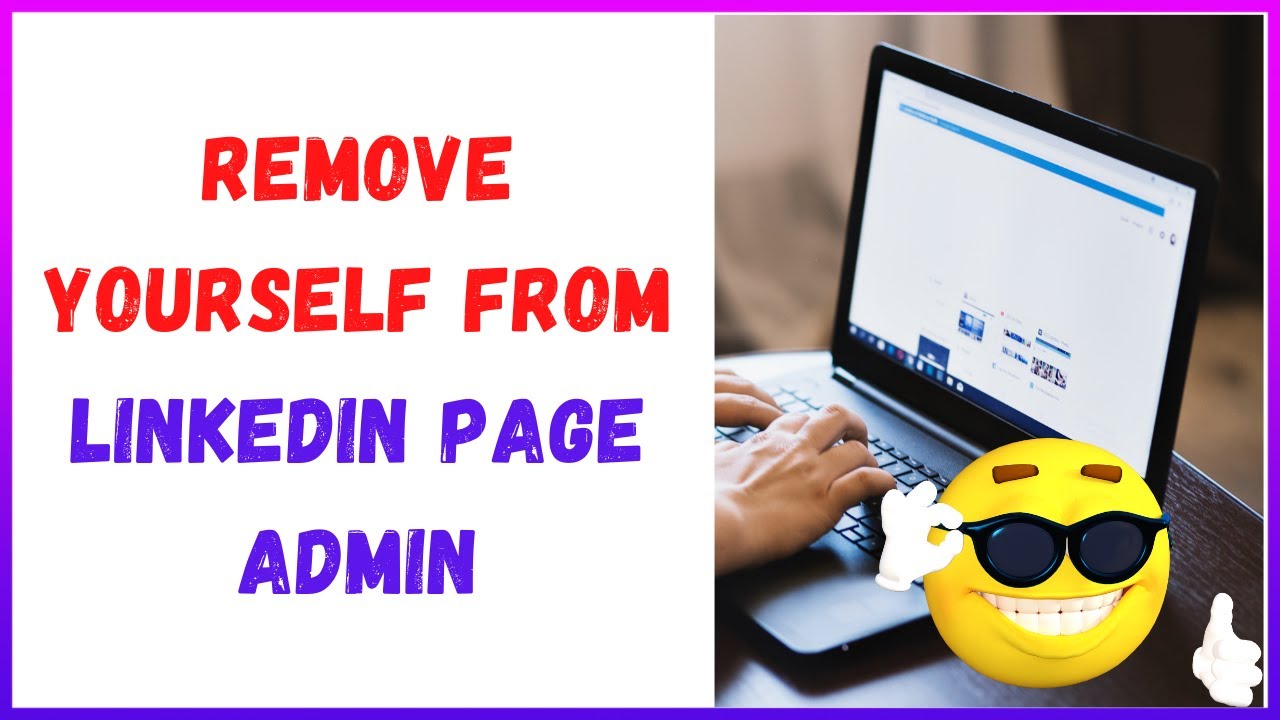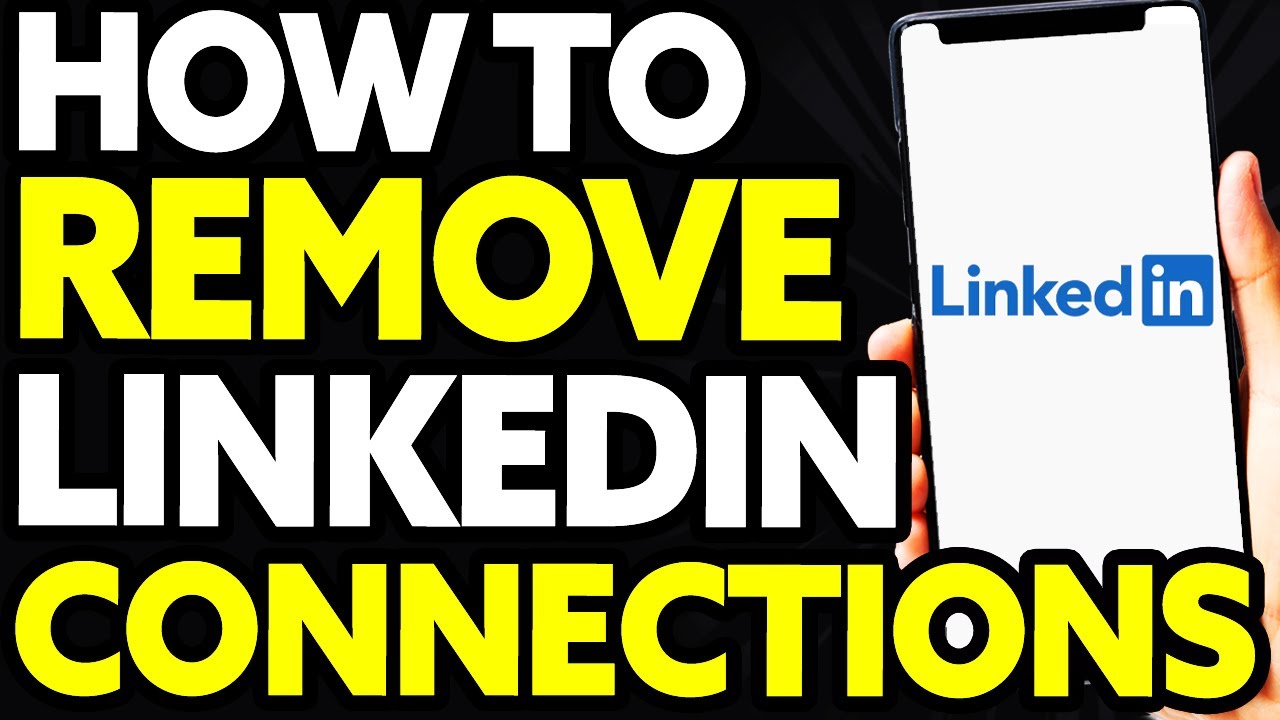LinkedIn is a fantastic platform for networking, connecting with professionals, and exploring job opportunities. However, there might be instances when you want to remove someone from your connections without making it immediately obvious. Whether it’s due to a change in career goals or simply a desire to curate your online presence, knowing how to handle this process discreetly is essential. In this post, we’ll explore the nuances of LinkedIn connections and provide a step-by-step guide on how to remove someone without notifying them.
Understanding LinkedIn Connections

LinkedIn connections can be thought of as your professional relationships, mirroring the connections you have in the real world. When you connect with someone on LinkedIn, you’re essentially saying, “I’d like to be part of your professional network.” But what does that really mean?
Here’s a quick breakdown of LinkedIn connections:
- 1st Degree Connections: These are people you are directly connected to. You can send them messages and see their posts.
- 2nd Degree Connections: These are friends of your friends. You can send them connection requests but cannot message them directly unless you're in a group together.
- 3rd Degree Connections: These are friends of your second-degree connections. You're not directly connected but can still reach out or get introductions through mutual connections.
Understanding these connections is key to managing your LinkedIn network. If you want to streamline your connections, it’s important to know that removing someone as a connection won’t send them a notification. However, they may notice their status has changed later on. This subtlety allows you to curate your network effectively.
In the following sections, we will delve deeper into how to manage and adjust your LinkedIn connections with confidence.
Steps to Remove a Connection Discreetly

Removing a connection on LinkedIn can sometimes feel like navigating a tightrope—especially when you want to do it without alerting the other person. Fortunately, LinkedIn provides a straightforward process to manage your connections while maintaining your privacy. Here’s how to go about it:
- Log into Your LinkedIn Account: Start by accessing your LinkedIn profile. It's where you'll manage all your connections.
- Visit Your Connections List: Click on the My Network tab at the top of your homepage. From there, select Connections on the left side of the page to view your current list of connections.
- Select the Connection to Remove: Scroll through the list or use the search bar to find the specific connection you want to remove. Once located, click on the three dots (more options) next to their name.
- Remove Connection: After clicking on the three dots, select Remove connection from the dropdown menu. This action does not send any notification to the person you’re removing.
- Confirm Your Choice: A prompt will appear asking you to confirm your decision. Click Remove again, and voilà! The connection is gone without any notification.
Following these steps ensures you can manage your LinkedIn connections effectively and discreetly. It's a simple process and can help keep your professional network aligned with your current goals.
Implications of Removing a Connection
While the process of removing a connection from LinkedIn is seamless, it’s essential to think about the implications this action can carry. After all, in the professional world, relationships matter! Here are some considerations:
- Loss of Networking Opportunities: By removing a connection, you might lose out on potential collaborations or job leads. Sometimes, people in your network can help more than you realize.
- Impact on Reputation: Depending on the nature of your relationship, this action might stem from a disagreement or dissatisfaction. The disconnected party may view this as unprofessional or petty, impacting how they perceive you.
- End of Interactions: Once you remove someone, any way they had of engaging with your updates or posts is severed. If you once found value in their content, consider whether you're ready to miss out on that.
- Future Reconnection Challenges: If you find that you need to reconnect in the future, it may feel awkward to send a connection request after having removed someone. Consider if you actually may want to expand the relationship again down the line.
Overall, think carefully before you click that remove button. It's not just about your comfort zone; it's also a reflection of your professional reputation and future networking avenues.
5. Alternatives to Removing a Connection
Sometimes, removing a connection on LinkedIn can feel a bit too harsh, especially if you're not entirely sure you'll never want to engage with that person again. Luckily, there are a few alternatives you can consider before hitting that 'remove' button.
- 1. Adjust Privacy Settings: Instead of removing someone, you can tweak your privacy settings to limit what they can see on your profile. This is handy if you want to maintain the connection without sharing too much information with them.
- 2. Mute the Connection: Currently, LinkedIn doesn’t have a direct mute button like some social platforms, but you can hide their posts by changing your feed preferences. Go to their profile, click on the three dots on their post, and select 'Hide this post.' While this won't remove them, it will minimize the content you see from them.
- 3. Unfollow Updates: Another option is to unfollow the individual. When you unfollow, you're not cutting ties; you're just reducing their posts and updates from cluttering your feed. To do this, visit their profile and choose ‘Unfollow’ from the options.
- 4. Engage Selectively: If you're concerned about the connection but still feel it’s valuable, consider engaging selectively. Interact with their content that aligns with your interests and ignore the ones that don’t resonate with you.
- 5. Move to Casual Networking: If someone is in your network that you’d prefer to keep at arm’s length, consider shifting your interaction style. Instead of accepting every invitation or engaging in routine chats, keep things more casual.
These alternatives can provide a good balance, allowing you to maintain professional relationships without over-sharing or feeling uncomfortable in your network.
6. Conclusion
Removing a connection from LinkedIn isn't as straightforward as it might seem; you want to tread carefully to avoid any unnecessary drama. However, now that you know how to remove someone without notifying them, you can strategically manage your network to better reflect your current professional goals.
Whether you choose to remove, mute, or unfollow connections, it’s essential to remember the purpose of LinkedIn: it’s about building a network that's beneficial to your career. Every connection, no matter how small or uncomfortable, contributes to your professional narrative, but that doesn’t mean you have to keep every link just because it exists.
In summary, consider your relationship with the person, what value they bring to your professional life, and whether a simple adjustment could achieve your goals without a complete severance. By following the insights shared here, you can curate your LinkedIn connections in a way that makes you feel more at ease and in control of your professional brand.










